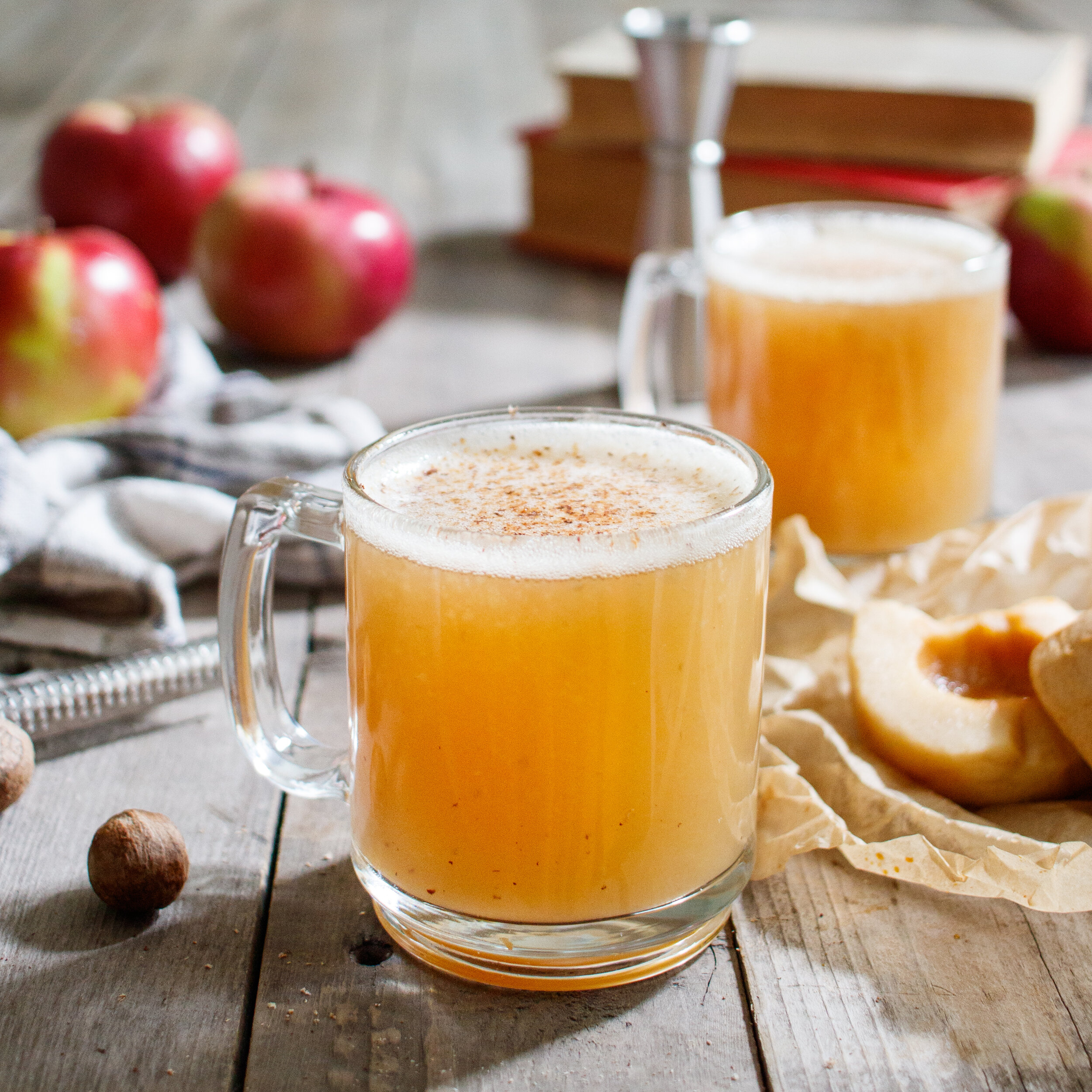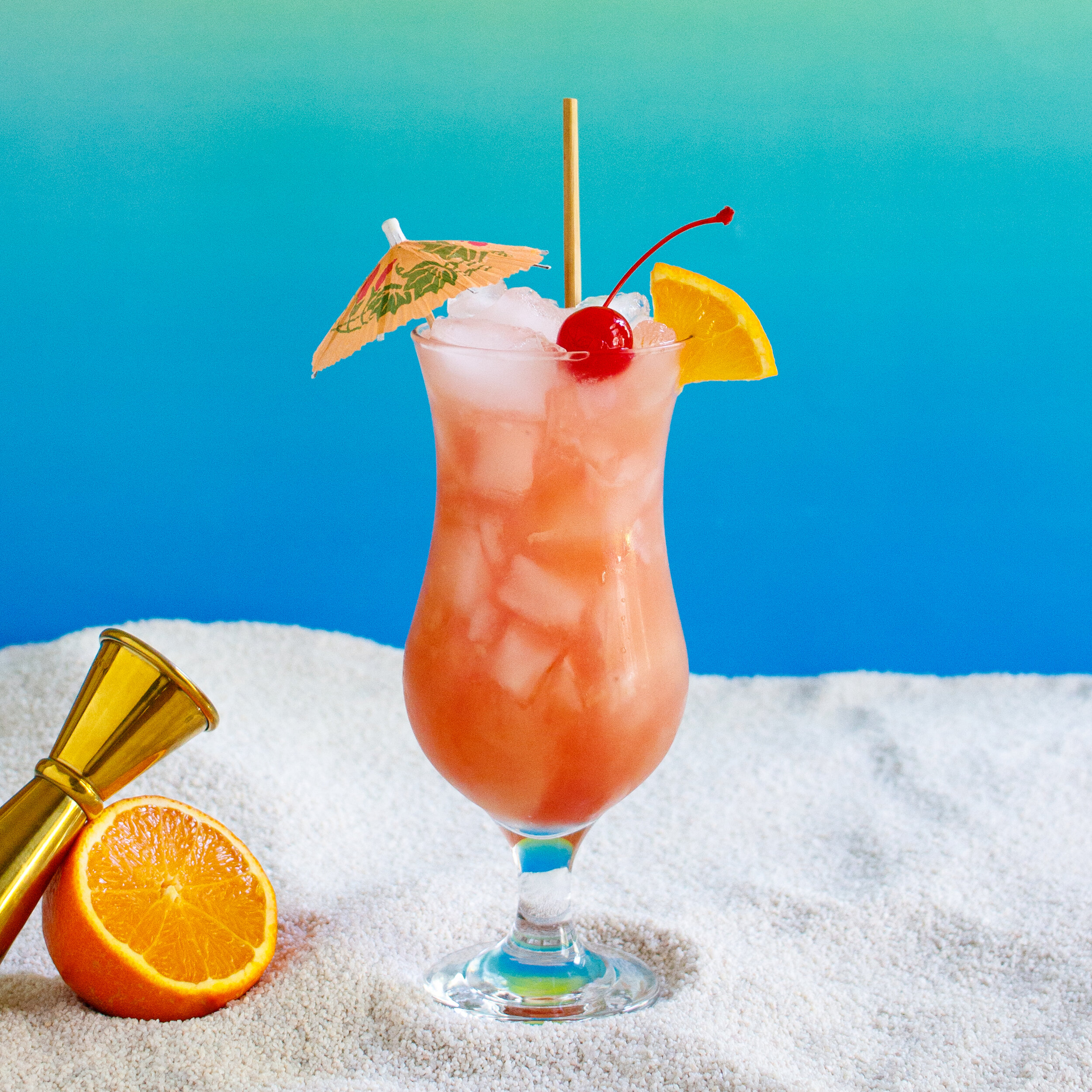2 ounces vodka
4 ounces tomato juice
½ ounce lemon juice
2 dashes hot sauce (you can add more to taste)
2 dashes Worcestershire sauce
2 teaspoons prepared horseradish
1 pinch ground black pepper
1 pinch smoked paprika
1 pinch celery salt OR Old Bay Seafood Seasoning
Garnish: celery stalk
Optional additional garnishes: green olives, lemon wedges, cornichon pickles, cocktail onions, pickled green beans
Combine all ingredients in a cocktail shaker with plenty of ice. Don’t shake too vigorously, as not to dilute the tomato juice. It’s better to gently swirl the drink until the shaker feels frosty. Pour over ice and garnish with a celery stick. If desired, add a skewer with another optional garnish or combination of garnishes.
The Bloody Mary has one of the haziest histories of any cocktail I’ve tried to research. There are several possible origin stories, probably because the recipe has always been evolving and almost encourages tweaking and customization. The most common story about where the Bloody Mary came from is that a bartender named Fernand Petiot invented it in the early 1920s at the famed Harry’s New York Bar in Paris.
As the story goes, Petiot invented the drink because Russians were moving to Paris fleeing the revolution and they had a taste for vodka. He found vodka flavorless though, so he mixed it with canned tomato juice and seasonings. After Prohibition, he brought the drink to Manhattan when he worked at the King Cole Bar in the St. Regis Hotel. The management made him change the name to Red Snapper instead, but it didn’t really stick. In the 40s he started adding even more ingredients, like hot sauce, horseradish, lemon juice, and celery salt and his jazzed up, spicier version really caught on.
While that story does sound believable, cocktail historian Jack McGarry points out that if the Bloody Mary had been invented in Paris in the 1920s, it would likely have appeared in one (if not several) of the many cocktail books being written about Paris’ cocktail scene at the time. He believes that the Bloody Mary was more likely invented by an early Hollywood comedian named George Jessel.
In his autobiography, Jessel said he invented the drink in 1927 in Palm Beach, Florida. He said that he and a buddy were trying to come up with a hangover cure when a bartender at their hotel reached behind the bar. "’Here, Georgie, try this,’ he said, holding up a dusty bottle I had never seen before. ‘They call it vodkee. We've had it for six years and nobody has ever asked for it’... I looked at it, sniffed it. It was pretty pungent. ‘Hell, what have we got to lose? Get me some Worcestershire sauce, some tomato juice, and lemon; that ought to kill the smell.’”
That’s when, he said, a socialite named Mary Brown Warburton walked in. 'Here, Mary, take a taste of this and see what you think of it.' Just as she did, she spilled some down the front of her white evening gown, took one look at the mess, and laughed, 'Now, you can call me Bloody Mary, George!'
Later, in an interview with the New Yorker in 1964, Petiot seemingly admitted Jessel’s version came first. "I initiated the Bloody Mary of today... Jessel said he created it, but it was really nothing but vodka and tomato juice when I took it over."
So, it appears that Jessel created a simple version of the Bloody Mary in Florida, but it didn’t become the cocktail we know today until Petiot moved to New York and started tweaking it and added new flavors and spices. As for the celery stick garnish, Neither Jessel nor Petiot were responsible for that. The celery stick was most likely was added at a restaurant in Chicago called the Pump Room in the 50s or 60s, though printed recipes don’t reference the celery garnish until 1979.










